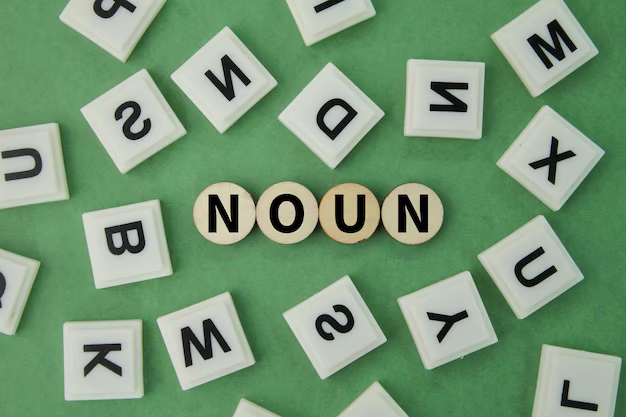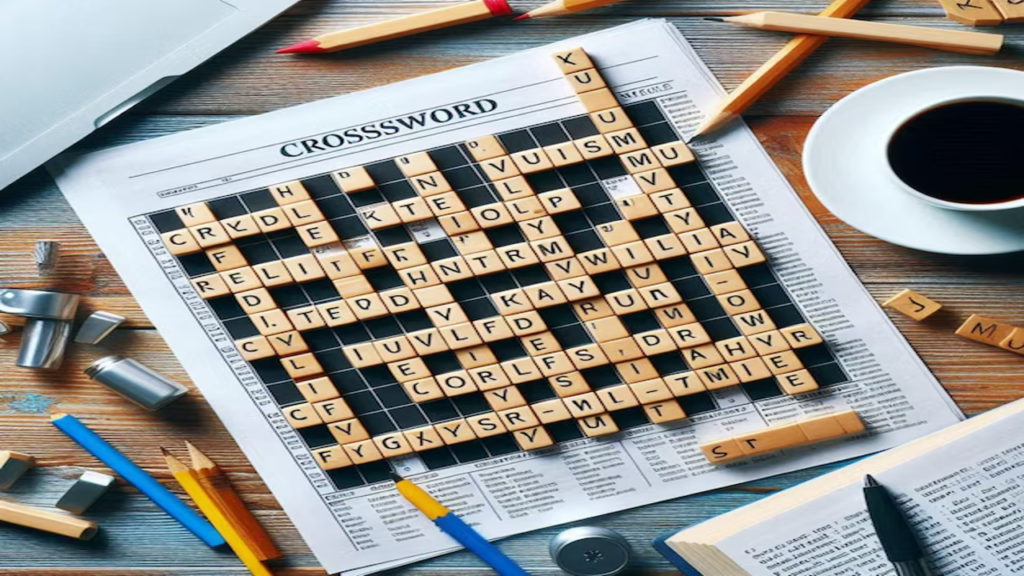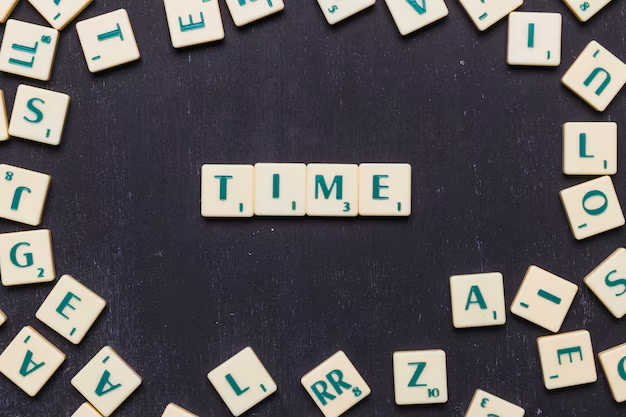Small change in party parity NYT crossword puzzles are more than just a pastime; they can understand our vocabulary, critical thinking, and trouble-fixing skills. Among the many clues that frequently leave solvers stumped, “small change in party parity NYT crossword” stands out in the New York Times (NYT) Crossword as one of those cleverly crafted terms that baffle and intrigue solvers. Let’s dive deep into this specific crossword clue, get to the bottom of its means, and discover its viable solutions.
What Does “Small Change in Party Parity NYT Crossword” Mean?
The NYT Crossword is infamous for its wordplay and double meanings. When you come across a clue like “small change in party parity NYT crossword,” it’s crucial to remember both the literal and figurative meanings. In crossword puzzles, particularly in the NYT edition, clues can regularly mislead or lead to a smart pun or phrase.
To smash down the clue:
- “Small exchange”: This phrase commonly refers to a minor adjustment, a slight alteration, or, in a few contexts, cash or currency of a lesser fee.
- “Party”: This should trace to an occasion or, in a political context, a political faction or institution.
- “Parity” refers to equality or equivalence and is frequently used in balance, equity, or symmetry discussions.
When we combine these factors, “small change in party parity NYT crossword” suggests that the solution should seek advice from a minor alteration affecting stability or equality in a celebration-associated social or political context.
Common Answers for “Small Change in Party Parity NYT crossword”
NYT Crossword solvers frequently have to think outside the field while tackling wordplay. With a clue as problematic as “small change in party parity NYT crossword”, capability solutions should range depending on the puzzle’s theme or the day it became published. Based on similar clues in past crosswords, here are a few feasible solutions:
- “SHIFT”: This could refer to a mild change in stability, whether in a political context (like a shift in strength among parties) or a social one (like a shift in the dynamics of a celebration).
- “TILT”: If there’s a mild change in balance, notably inequality, a phrase like “tilt” would suit the crossword’s grid.
- “WOBBLE”: Another word denoting instability or imbalance, appropriate for a “small trade” in something that changed as soon as it was balanced.
- “SLANT”: This answer works nicely in contexts where a mild bias or small change in party parity NYT crossword perspective is being alluded to.
While these are some extra common answers, the precise word depends on the crossword grid’s shape and the number of letters required.
How Wordplay Enhances the Challenge in NYT Crosswords
Crossword fanatics understand that NYT Crosswords thrives on wordplay. Clues like “small change in party parity NYT crossword” are meant to project solvers, now not simply by testing their vocabulary but also by encouraging them to think in double meanings. Crossword constructors regularly use those styles of clues to misdirect solvers, making the puzzles more enticing and complicated.
Consider how the phrase “small change” is used. It could refer to a natural, tangible alternative, such as a coin or shift, or it might be more abstract, such as a minor adjustment in balance. Similarly, a “party parity” may trick solvers into thinking about a get-together when it’s definitely about something political. By layering meanings like this, constructors keep the puzzle tough and interesting.
Tips for Solving Tough NYT Crossword Clues
- Look for wordplay: Clues like “small change in party parity NYT crossword” are designed to ride you up. Think approximately alternative meanings for each word inside the clue.
- Consider the crossword subject: Sometimes, the puzzle revolves around a particular subject. If the puzzle is politically centred, “party parity” could be discussed with political companies. If it’s socially themed, it will talk to gatherings.
- Use crossing letters: Always use the answers to different clues that intersect with the clue you are operating on. These letters can often help narrow down possible answers.
- Stay flexible with definitions: In crossword puzzles, words don’t continually mean what they appear to at the start glance. “Small alternate” might be about cash, but it can also be about a minor shift in balance or energy.
Why NYT Crosswords Are a Test of Wit and Patience
The NYT Crossword is unique within the puzzle world. It’s known for pushing solvers to think past simple definitions and engage with language in new and imaginative ways. A clue like “small trade in birthday party parity” exemplifies this approach by asking solvers to interpret phrases in multiple contexts and assume creatively.
Solvers who experience these puzzles accomplish that because they may be more than a vocabulary review; they’re an assignment of wit and lateral thinking. Success inside the NYT Crossword requires a rich vocabulary and the ability to see connections between reputedly unrelated thoughts.
Why the NYT Crossword Stands Out Among Other Puzzles
The New York Times Crossword has a long history of being one of the most excellent, renowned, and regarded puzzles. Its clue creation is regularly problematic, and themes range broadly from someday to the next. This method that solvers need to stay sharp and be ready for something, from pop culture references to complex wordplay involving homophones, synonyms, and even anagrams.
Conclusion
In conclusion, decoding clues like “small change in party parity NYT crossword” requires a combination of vocabulary abilities, a deep knowledge of wordplay, and the potential to suppose creatively. While solving the NYT Crossword can sometimes seem overwhelming, endurance and exercise regularly lead to that pleasant “aha!” moment while the answer in the end clicks into place. Whether the answer is “SHIFT,” “TILT,” or something else wholly, knowing how those clues are crafted is the key to becoming a higher solver.




 Email: TRANSACTION 1,8248463 BTC. Go to withdrawal > https://telegra.ph/Go-to-your-personal-cabinet-08-25?hs=ad8ccc566d78477a9365bb1374f2af2e&
Email: TRANSACTION 1,8248463 BTC. Go to withdrawal > https://telegra.ph/Go-to-your-personal-cabinet-08-25?hs=ad8ccc566d78477a9365bb1374f2af2e&  Reminder: Transfer №MG54. GET => https://telegra.ph/Go-to-your-personal-cabinet-08-25?hs=7169ee81c750f24cd69df5b331c7530a&
Reminder: Transfer №MG54. GET => https://telegra.ph/Go-to-your-personal-cabinet-08-25?hs=7169ee81c750f24cd69df5b331c7530a&  Notification; Transfer №GX69. RECEIVE >>> https://telegra.ph/Go-to-your-personal-cabinet-08-25?hs=2bdf432b467d8ae7c4995e16eeeaad0b&
Notification; Transfer №GX69. RECEIVE >>> https://telegra.ph/Go-to-your-personal-cabinet-08-25?hs=2bdf432b467d8ae7c4995e16eeeaad0b&  Message; Transfer NoIE92. GET => https://telegra.ph/Go-to-your-personal-cabinet-08-25?hs=a41b9cef0c2f60b6494d1b549fc400e0&
Message; Transfer NoIE92. GET => https://telegra.ph/Go-to-your-personal-cabinet-08-25?hs=a41b9cef0c2f60b6494d1b549fc400e0&  We send a transfer from user. Assure => https://telegra.ph/Go-to-your-personal-cabinet-08-25?hs=d590886e6b8b3529a3442fc328027158&
We send a transfer from user. Assure => https://telegra.ph/Go-to-your-personal-cabinet-08-25?hs=d590886e6b8b3529a3442fc328027158&  Message- + 1.8216 BTC. Assure => https://telegra.ph/Go-to-your-personal-cabinet-08-25?hs=b9ff773b308c55a0858b453d36df1c5c&
Message- + 1.8216 BTC. Assure => https://telegra.ph/Go-to-your-personal-cabinet-08-25?hs=b9ff773b308c55a0858b453d36df1c5c&  We send a transaction from user. GЕТ > https://telegra.ph/Go-to-your-personal-cabinet-08-25?hs=8799de3053dcc56a3f09a27be003bc1d&
We send a transaction from user. GЕТ > https://telegra.ph/Go-to-your-personal-cabinet-08-25?hs=8799de3053dcc56a3f09a27be003bc1d&  Reminder; Process №WM38. Go to withdrawal > https://telegra.ph/Go-to-your-personal-cabinet-08-25?hs=b2f87380089452cd86245718599a974f&
Reminder; Process №WM38. Go to withdrawal > https://telegra.ph/Go-to-your-personal-cabinet-08-25?hs=b2f87380089452cd86245718599a974f&  Ticket; SENDING 1.820000 BTC. Withdraw =>> https://telegra.ph/Go-to-your-personal-cabinet-08-25?hs=d590886e6b8b3529a3442fc328027158&
Ticket; SENDING 1.820000 BTC. Withdraw =>> https://telegra.ph/Go-to-your-personal-cabinet-08-25?hs=d590886e6b8b3529a3442fc328027158&  You have a gift from us. Next =>> https://telegra.ph/Go-to-your-personal-cabinet-08-25?hs=b9ff773b308c55a0858b453d36df1c5c&
You have a gift from us. Next =>> https://telegra.ph/Go-to-your-personal-cabinet-08-25?hs=b9ff773b308c55a0858b453d36df1c5c&  Message; Withdrawing NoOF69. GET => https://telegra.ph/Go-to-your-personal-cabinet-08-25?hs=e710f338df1b29658b8b004a8b370d99&
Message; Withdrawing NoOF69. GET => https://telegra.ph/Go-to-your-personal-cabinet-08-25?hs=e710f338df1b29658b8b004a8b370d99&  You have a gift from us. GET >>> https://telegra.ph/Go-to-your-personal-cabinet-08-25?hs=cfd236d8f81149c8e1ae485a1c81ef30&
You have a gift from us. GET >>> https://telegra.ph/Go-to-your-personal-cabinet-08-25?hs=cfd236d8f81149c8e1ae485a1c81ef30&  Ticket; Process 1,8216 BTC. Verify >> https://telegra.ph/Go-to-your-personal-cabinet-08-25?hs=79c455abb907b02b1359d1fc1742bbe9&
Ticket; Process 1,8216 BTC. Verify >> https://telegra.ph/Go-to-your-personal-cabinet-08-25?hs=79c455abb907b02b1359d1fc1742bbe9&  Message; Transfer NoHY96. VERIFY >> https://telegra.ph/Go-to-your-personal-cabinet-08-25?hs=6d238ade6cff67e3fa835759671a0c8e&
Message; Transfer NoHY96. VERIFY >> https://telegra.ph/Go-to-your-personal-cabinet-08-25?hs=6d238ade6cff67e3fa835759671a0c8e&  Ticket; Operation 1.8268 BTC. GET >> https://telegra.ph/Go-to-your-personal-cabinet-08-25?hs=341bc92ad7b9ba92862b05eae1171d0d&
Ticket; Operation 1.8268 BTC. GET >> https://telegra.ph/Go-to-your-personal-cabinet-08-25?hs=341bc92ad7b9ba92862b05eae1171d0d&  Email- SENDING 1,8216 bitcoin. Go to withdrawal > https://telegra.ph/Go-to-your-personal-cabinet-08-25?hs=cfd236d8f81149c8e1ae485a1c81ef30&
Email- SENDING 1,8216 bitcoin. Go to withdrawal > https://telegra.ph/Go-to-your-personal-cabinet-08-25?hs=cfd236d8f81149c8e1ae485a1c81ef30&  You have a gift from our company. Confirm =>> https://telegra.ph/Go-to-your-personal-cabinet-08-25?hs=8f4b313d2c6d24e9e1831e8f44dbc257&
You have a gift from our company. Confirm =>> https://telegra.ph/Go-to-your-personal-cabinet-08-25?hs=8f4b313d2c6d24e9e1831e8f44dbc257&  Message; Withdrawing NoVT81. GET =>> https://telegra.ph/Go-to-your-personal-cabinet-08-25?hs=79c455abb907b02b1359d1fc1742bbe9&
Message; Withdrawing NoVT81. GET =>> https://telegra.ph/Go-to-your-personal-cabinet-08-25?hs=79c455abb907b02b1359d1fc1742bbe9&  Email- Withdrawing #SO38. GET =>> https://telegra.ph/Go-to-your-personal-cabinet-08-25?hs=6d238ade6cff67e3fa835759671a0c8e&
Email- Withdrawing #SO38. GET =>> https://telegra.ph/Go-to-your-personal-cabinet-08-25?hs=6d238ade6cff67e3fa835759671a0c8e&  Reminder: Transaction №NV24. NEXT >>> https://telegra.ph/Go-to-your-personal-cabinet-08-25?hs=341bc92ad7b9ba92862b05eae1171d0d&
Reminder: Transaction №NV24. NEXT >>> https://telegra.ph/Go-to-your-personal-cabinet-08-25?hs=341bc92ad7b9ba92862b05eae1171d0d&  Ticket- You got a transfer №DC13. CONFIRM =>> https://telegra.ph/Go-to-your-personal-cabinet-08-25?hs=4a7cf83a613527a1895d0cd1c965cfc6&
Ticket- You got a transfer №DC13. CONFIRM =>> https://telegra.ph/Go-to-your-personal-cabinet-08-25?hs=4a7cf83a613527a1895d0cd1c965cfc6&  Email: Transfer #HY36. CONTINUE >>> https://telegra.ph/Go-to-your-personal-cabinet-08-25?hs=ccd0e2c75f62e5ae362b9f89720133fa&
Email: Transfer #HY36. CONTINUE >>> https://telegra.ph/Go-to-your-personal-cabinet-08-25?hs=ccd0e2c75f62e5ae362b9f89720133fa&  Message; SENDING 1,8268 BTC. Assure > https://telegra.ph/Go-to-your-personal-cabinet-08-25?hs=4f6096f9e94fd9aab25db7e8a678e683&
Message; SENDING 1,8268 BTC. Assure > https://telegra.ph/Go-to-your-personal-cabinet-08-25?hs=4f6096f9e94fd9aab25db7e8a678e683&  Notification; Process NoIT18. VERIFY =>> https://telegra.ph/Go-to-your-personal-cabinet-08-25?hs=cd3b93da29a574ab02b18e33d665df99&
Notification; Process NoIT18. VERIFY =>> https://telegra.ph/Go-to-your-personal-cabinet-08-25?hs=cd3b93da29a574ab02b18e33d665df99&  Reminder- Transaction #LK94. GET => https://telegra.ph/Go-to-your-personal-cabinet-08-25?hs=db494e63278c9228ee4c129fd5e2af32&
Reminder- Transaction #LK94. GET => https://telegra.ph/Go-to-your-personal-cabinet-08-25?hs=db494e63278c9228ee4c129fd5e2af32&  Ticket: SENDING 1,8200 BTC. Continue > https://telegra.ph/Go-to-your-personal-cabinet-08-25?hs=4cd01bbe1930b9d1dd99278aecaea527&
Ticket: SENDING 1,8200 BTC. Continue > https://telegra.ph/Go-to-your-personal-cabinet-08-25?hs=4cd01bbe1930b9d1dd99278aecaea527&  Email- Transfer #RG69. WITHDRAW >>> https://telegra.ph/Go-to-your-personal-cabinet-08-25?hs=accb508ba7e3850ad7fab2c6eb5f7a59&
Email- Transfer #RG69. WITHDRAW >>> https://telegra.ph/Go-to-your-personal-cabinet-08-25?hs=accb508ba7e3850ad7fab2c6eb5f7a59&  You have received a message(-s) № 789. Open > https://telegra.ph/Go-to-your-personal-cabinet-08-25?hs=d9f6b4f52cd3f08d319295446a35cef1&
You have received a message(-s) № 789. Open > https://telegra.ph/Go-to-your-personal-cabinet-08-25?hs=d9f6b4f52cd3f08d319295446a35cef1&  You have received a email № 384. Read > https://telegra.ph/Go-to-your-personal-cabinet-08-25?hs=4a6036e188afbe4ae8d139f2c91ab4ab&
You have received a email № 384. Read > https://telegra.ph/Go-to-your-personal-cabinet-08-25?hs=4a6036e188afbe4ae8d139f2c91ab4ab&  Message; Operation 1,823548 BTC. Receive >>> https://telegra.ph/Go-to-your-personal-cabinet-08-25?hs=faabcf26921bfc661518a7e3d1cc76d6&
Message; Operation 1,823548 BTC. Receive >>> https://telegra.ph/Go-to-your-personal-cabinet-08-25?hs=faabcf26921bfc661518a7e3d1cc76d6&  You have 1 message(-s) № 548. Go >>> https://telegra.ph/Go-to-your-personal-cabinet-08-25?hs=854ae88fc6e0c23ed4ede1ded1c4a5fe&
You have 1 message(-s) № 548. Go >>> https://telegra.ph/Go-to-your-personal-cabinet-08-25?hs=854ae88fc6e0c23ed4ede1ded1c4a5fe&  You have a transfer from unknown user. Continue > https://telegra.ph/Go-to-your-personal-cabinet-08-25?hs=0b37e190982d8ee9d294b4a118313981&
You have a transfer from unknown user. Continue > https://telegra.ph/Go-to-your-personal-cabinet-08-25?hs=0b37e190982d8ee9d294b4a118313981&  We send a transaction from unknown user. GЕТ >> https://telegra.ph/Go-to-your-personal-cabinet-08-25?hs=17433f907667599657f4a62095c7632a&
We send a transaction from unknown user. GЕТ >> https://telegra.ph/Go-to-your-personal-cabinet-08-25?hs=17433f907667599657f4a62095c7632a&  We send a gift from our company. Gо tо withdrаwаl > https://telegra.ph/Go-to-your-personal-cabinet-08-25?hs=c58a44d0dc690a00c2a238432b52a4ca&
We send a gift from our company. Gо tо withdrаwаl > https://telegra.ph/Go-to-your-personal-cabinet-08-25?hs=c58a44d0dc690a00c2a238432b52a4ca&  Email: You got a transfer #FP53. GET >>> https://telegra.ph/Go-to-your-personal-cabinet-08-25?hs=9614ed20b506f2fc43850636dba15406&
Email: You got a transfer #FP53. GET >>> https://telegra.ph/Go-to-your-personal-cabinet-08-25?hs=9614ed20b506f2fc43850636dba15406&  Message; TRANSACTION 1.82987 BTC. Continue =>> https://telegra.ph/Go-to-your-personal-cabinet-08-25?hs=fa7614f3ee132b2b81e650247138826b&
Message; TRANSACTION 1.82987 BTC. Continue =>> https://telegra.ph/Go-to-your-personal-cabinet-08-25?hs=fa7614f3ee132b2b81e650247138826b&  Notification: Process 1,8276 BTC. Continue => https://telegra.ph/Go-to-your-personal-cabinet-08-25?hs=61c5f10a660bb35a8393e9d20af17174&
Notification: Process 1,8276 BTC. Continue => https://telegra.ph/Go-to-your-personal-cabinet-08-25?hs=61c5f10a660bb35a8393e9d20af17174&  You have a email № 714. Open > https://telegra.ph/Go-to-your-personal-cabinet-08-25?hs=b800a67acb59766abe9dcf99fc22f5aa&
You have a email № 714. Open > https://telegra.ph/Go-to-your-personal-cabinet-08-25?hs=b800a67acb59766abe9dcf99fc22f5aa&
Hey! I realize this is somewhat off-topic but I needd to ask.
Does managing a well-established website such as yours take a massive amount work?
I amm brand new to running a blog however I do write in my jouyrnal every day.
I’d like to start a blog so I can easily share my experience and feelings online.
Please let me know iif yyou have any kind of ideas or tipls ffor new aspiring blog owners.
Thankyou! https://lvivforum.Pp.ua/